Last week we had the opportunity to go on a ‘dive trip’ beyond our normal boating and diving range. We usually dive from open, Zodiac boats as you’ve read about in other posts, and we don’t go out of what is referred to as the “local” boating area. That is within a radius of two to three miles from the station. A main reason for staying relatively close is because if a diver somehow had a bad leak in their dry suit (unlikely, but not impossible) going much further would make for a very cold ride home.
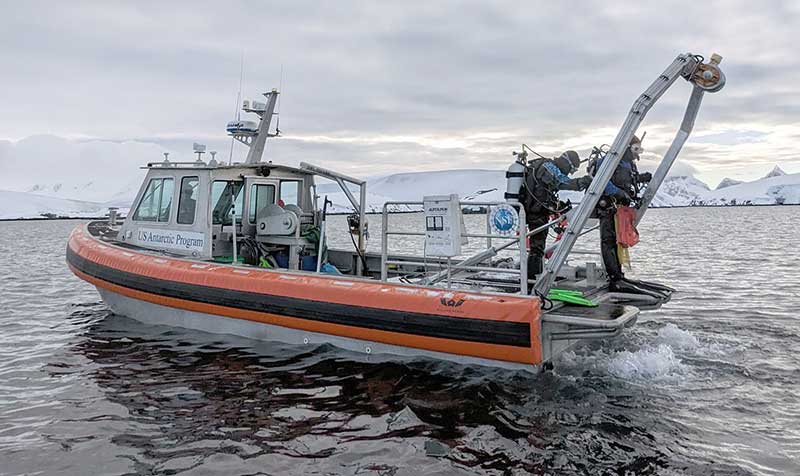
However, in addition to the fleet of Zodiacs and similar small boats, the station has two larger Rigid Hull Inflatable Boats (RHIBs). That’s what you see in the image above. Only one is here right now, which is named Hadar after a bright star in the southern hemisphere sky. Hadar can venture much further from station than a Zodiac can alone, and importantly for our dive operations, it has a heated cabin. So, if we were to get wet we’d have a warm place to be. It also gives us a place to warm up between dives under normal circumstances. That means that we can couple longer trips with more dives once there, which is what Hannah and I are doing in the image below.
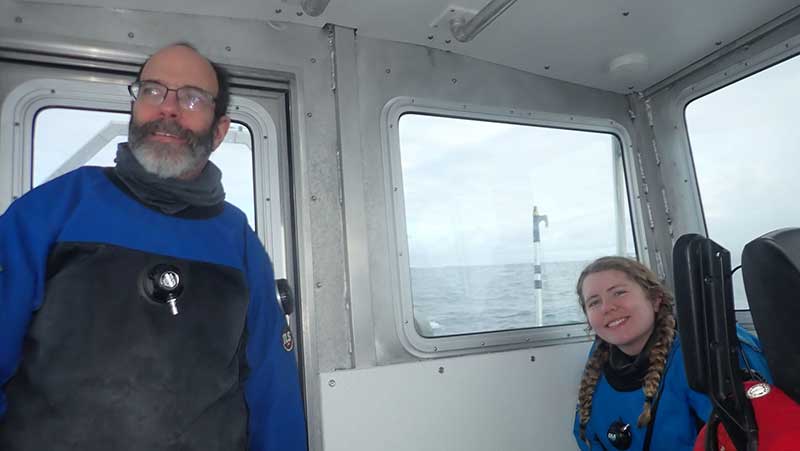
The trip last week was to a group of islands about 10 to 12 miles south of the station (well outside the local boating area) called the Wauwermans Islands (pronounced wow-er-mens). They are different from the islands near station for several reasons, most obviously because many still have remnant glacial caps of ice. You can see those in several of the images here. Maggie talked about what we saw when underwater in the Wauwermans in her last post.
When we dive from the RHIBs, we usually get into our gear on the boat, as you see in the photo below of Hannah and Maggie. Then we stand up on the stern of the boat and, when in position and the captain signals that the engines are out of gear, we step off platforms that extend over them. You can see those in the top photo.
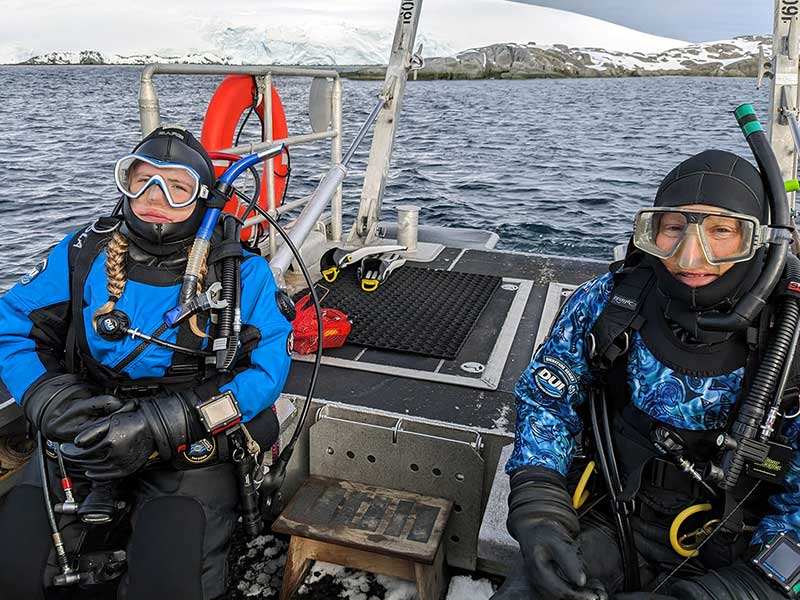
Although there is a ladder we could bring that could let us get back into the RHIB after a dive, it is easier and quicker to get back into a Zodiac. It is also easier for someone in a Zodiac to see and follow the divers’ bubbles. So, Jami and the Palmer Lab Supervisor, Hannah James, followed RHIB Hadar to the Wauwermans, as you see below.
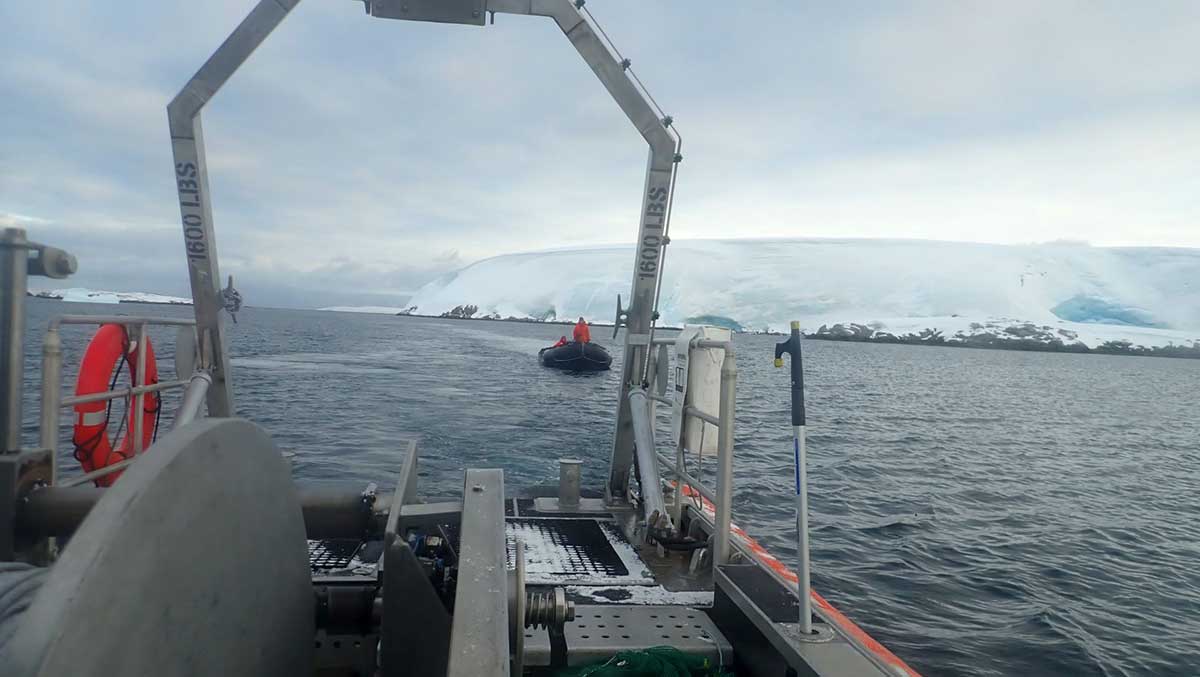
Maggie, Hannah, and I made three total dives, with each of us making two to do the video recordings that Maggie talked about. Jami and Hannah J. followed our bubbles during the dives and then at the end of the dives, as you see below, picked us up just like a ‘regular’ Zodiac dive nearer to Palmer.
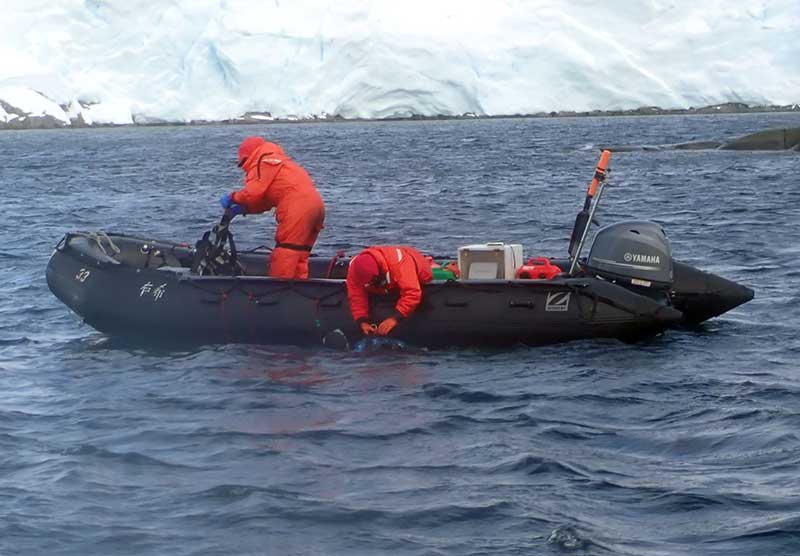
As you can tell from Maggie’s describing all we saw in the Wauwermans, it was a very successful trip. Even more so than she described, though. The specific site we dove on was part of a different project that Maggie, Jim, and I are involved with. In 2019 we did video and other sampling there and at 13 other sites along a wide area several hundred kilometers south of Palmer. It was very helpful to our understanding of the patterns to be able to get back to the Wauwermans site again after almost four years.
Hopefully, we’ll have one more day on Hadar to get to another of the sites from that 2019 study that is about eight to ten miles to the west of Palmer. If time allows, we can tell you about that trip in an upcoming post.